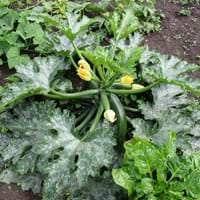Origin
South America, Micronesia, New Zealand
America
Types
Not Available
Not Available
Habitat
coastal environs, Grassland, Roadsides, Waste areas, waterways
agricultural areas
USDA Hardiness Zone
7-11
Not Available
AHS Heat Zone
11 - 7
Not Available
Sunset Zone
H1, 3a, 3b, 4, 5, 6, 7, 8, 9, 10, 11, 12, 13, 14, 15, 16, 17, 18, 19, 20, 21, 22, 23, 24
Not Available
Habit
Clump-Forming
Bushy, Evergreen
Flower Color
Purple
Lavender
Flower Color Modifier
Bicolor
Bicolor
Fruit Color
Not Available
Purple, Black
Leaf Color in Spring
Green, Light Green, Dark Green
Green
Leaf Color in Summer
Light Green
Green
Leaf Color in Fall
Green, Light Green, Dark Green
Green
Leaf Color in Winter
Dark Green, Tan
Green
Leaf Shape
Grass like
Heart shaped, toothed with three to five lobes
Plant Season
Spring, Summer, Fall, Winter
Not Available
Sunlight
Full Sun
Full Sun
Type of Soil
Loam
Loam, Moist, Well drained
The pH of Soil
Acidic, Neutral
Acidic, Neutral, Alkaline
Soil Drainage
Well drained
Well drained
Bloom Time
Summer, Fall
Indeterminate
Tolerances
Drought, Salt
Drought, Pollution, Shade areas, Soil Compaction
Where to Plant?
Ground
Ground
How to Plant?
Seedlings
Seedlings
Plant Maintenance
Medium
Medium
Watering Requirements
Average Water Needs
Allow soil to be completely dry in between waterings, Do not water excessively
In Summer
Lots of watering
Lots of watering
In Spring
Moderate
Moderate
In Winter
Average Water
Average Water
Soil pH
Acidic, Neutral
Acidic, Neutral, Alkaline
Soil Type
Loam
Clay, Loam, Sand
Soil Drainage Capacity
Well drained
Well drained
Sun Exposure
Full Sun
Full Sun
Pruning
Remove damaged leaves, Remove dead branches, Remove dead leaves
cut main flower spike, Proper mowing practices are necessary, Remove damaged fruit
Fertilizers
All-Purpose Liquid Fertilizer
Balanced liquid fertilizer every 4 weeks, Compost
Pests and Diseases
Red blotch
Bacterial Stem Rot, Mildew, Red blotch, Ring Rot, White spots
Plant Tolerance
Drought
Shade areas, Shallow soil, Soil Compaction
Flower Petal Number
Single
Single
Fragrant Bark/Stem
No
Yes
Foliage Texture
Fine
Medium
Foliage Sheen
Matte
Matte
Self-Sowing
Yes
Not Available
Attracts
Not Available
Leafminer, Mice, Not Available, Rodents
Allergy
Itchiness
Sore Throat, Stomach pain
Aesthetic Uses
Showy Purposes
Ornamental use
Beauty Benefits
Not Available
Anti-ageing, Remove blemishes
Edible Uses
Sometimes
Yes
Environmental Uses
Air purification
Fixes Nitrogen, Food for animals
Medicinal Uses
Not Available
Antibacterial, Antioxidants, Detoxification, Rich in Potassium, Weight loss
Part of Plant Used
Flowers, Leaves
Flowers, Fruits
Other Uses
Animal Feed, Used as Ornamental plant
Cattle Fodder, Culinary use, Used as a laxative
Used As Indoor Plant
No
No
Used As Outdoor Plant
Yes
Yes
Garden Design
Cutflower, Dried Flower/Everlasting, Feature Plant, Foundation, Groundcover, Mixed Border, Screening / Wind Break
Container, Edible, Herb, Vegetable
Botanical Name
CORTADERIA jubata
Cucurbita pepo
Common Name
Purple Pampas Grass
Zucchini, courgette
In Hindi
Purple pampas grass
तोरी
In German
Lila Pampasgras
Zucchini
In French
Pourpre herbe de pampa
Courgette
In Spanish
hierba púrpura pampas
calabacín
In Greek
Μωβ γρασίδι παμπάς
κολοκύθι
In Portuguese
grama roxa pampas
abobrinha
In Polish
Purpurowy trawa pampasów
Kabaczek
In Latin
Purpura Pampas herba
zucchini
Phylum
Magnoliophyta
Magnoliophyta
Class
Liliopsida
Magnoliopsida
Family
Poaceae
Cucurbitaceae
Genus
Cortaderia
Cucurbita
Clade
Angiosperms, Commelinids, Monocots
Not Available
Tribe
Not Available
Not Available
Subfamily
Not Available
Not Available, Solanoideae
Number of Species
Not Available
Not Available
Importance of Purple Pampas Grass and Zucchini
Want to have the most appropriate plant for your garden? You might want to know the importance of Purple Pampas Grass and Zucchini. Basically, these two plants vary in many aspects. Compare Purple Pampas Grass and Zucchini as they differ in many characteristics such as their life, care, benefits, facts, etc. Every gardener must at least have the slightest clue about the plants he wants to plant in his garden. Compare their benefits, which differ in many ways like facts and uses. The medicinal use of Purple Pampas Grass is Not Available whereas of Zucchini is Antibacterial, Antioxidants, Detoxification, Rich in Potassium and Weight loss. Purple Pampas Grass has beauty benefits as follows: Not Available while Zucchini has beauty benefits as follows: Not Available.
Compare Facts of Purple Pampas Grass vs Zucchini
How to choose the best garden plant for your garden depending upon its facts? Here garden plant comparison will help you to solve this query. Compare the facts of Purple Pampas Grass vs Zucchini and know which one to choose. As garden plants have benefits and other uses, allergy is also a major drawback of plants for some people. Allergic reactions of Purple Pampas Grass are Itchiness whereas of Zucchini have Sore Throat and Stomach pain respectively. Having a fruit bearing plant in your garden can be a plus point of your garden. Purple Pampas Grass has showy fruits and Zucchini has showy fruits. Also Purple Pampas Grass is not flowering and Zucchini is not flowering . You can compare Purple Pampas Grass and Zucchini facts and facts of other plants too.





